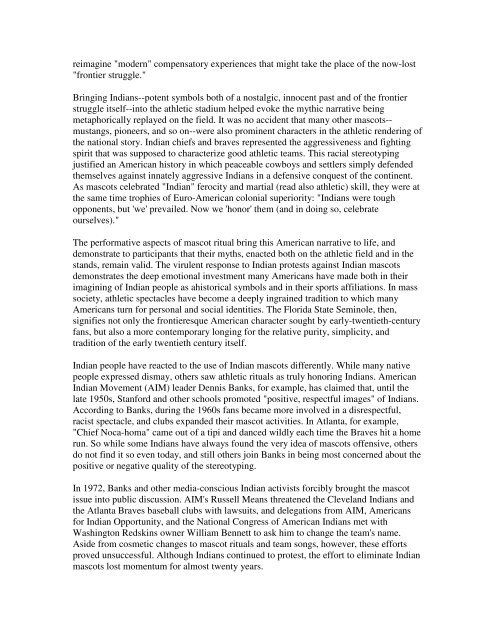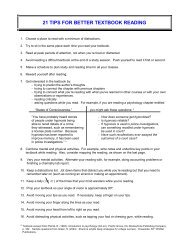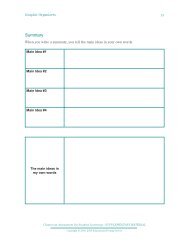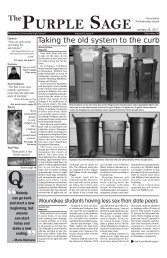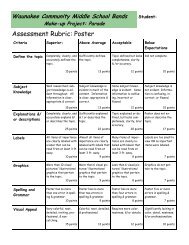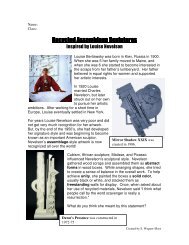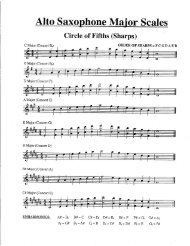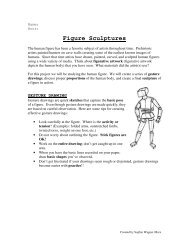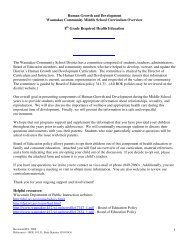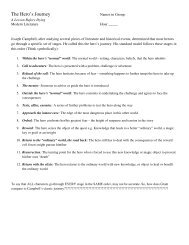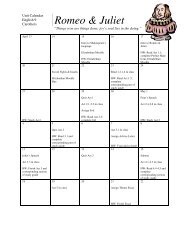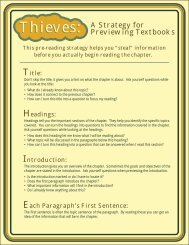Mascots and Other Public Appropriations of Indians and Indian ...
Mascots and Other Public Appropriations of Indians and Indian ...
Mascots and Other Public Appropriations of Indians and Indian ...
You also want an ePaper? Increase the reach of your titles
YUMPU automatically turns print PDFs into web optimized ePapers that Google loves.
eimagine "modern" compensatory experiences that might take the place <strong>of</strong> the now-lost<br />
"frontier struggle."<br />
Bringing <strong><strong>Indian</strong>s</strong>--potent symbols both <strong>of</strong> a nostalgic, innocent past <strong>and</strong> <strong>of</strong> the frontier<br />
struggle itself--into the athletic stadium helped evoke the mythic narrative being<br />
metaphorically replayed on the field. It was no accident that many other mascots-mustangs,<br />
pioneers, <strong>and</strong> so on--were also prominent characters in the athletic rendering <strong>of</strong><br />
the national story. <strong>Indian</strong> chiefs <strong>and</strong> braves represented the aggressiveness <strong>and</strong> fighting<br />
spirit that was supposed to characterize good athletic teams. This racial stereotyping<br />
justified an American history in which peaceable cowboys <strong>and</strong> settlers simply defended<br />
themselves against innately aggressive <strong><strong>Indian</strong>s</strong> in a defensive conquest <strong>of</strong> the continent.<br />
As mascots celebrated "<strong>Indian</strong>" ferocity <strong>and</strong> martial (read also athletic) skill, they were at<br />
the same time trophies <strong>of</strong> Euro-American colonial superiority: "<strong><strong>Indian</strong>s</strong> were tough<br />
opponents, but 'we' prevailed. Now we 'honor' them (<strong>and</strong> in doing so, celebrate<br />
ourselves)."<br />
The performative aspects <strong>of</strong> mascot ritual bring this American narrative to life, <strong>and</strong><br />
demonstrate to participants that their myths, enacted both on the athletic field <strong>and</strong> in the<br />
st<strong>and</strong>s, remain valid. The virulent response to <strong>Indian</strong> protests against <strong>Indian</strong> mascots<br />
demonstrates the deep emotional investment many Americans have made both in their<br />
imagining <strong>of</strong> <strong>Indian</strong> people as ahistorical symbols <strong>and</strong> in their sports affiliations. In mass<br />
society, athletic spectacles have become a deeply ingrained tradition to which many<br />
Americans turn for personal <strong>and</strong> social identities. The Florida State Seminole, then,<br />
signifies not only the frontieresque American character sought by early-twentieth-century<br />
fans, but also a more contemporary longing for the relative purity, simplicity, <strong>and</strong><br />
tradition <strong>of</strong> the early twentieth century itself.<br />
<strong>Indian</strong> people have reacted to the use <strong>of</strong> <strong>Indian</strong> mascots differently. While many native<br />
people expressed dismay, others saw athletic rituals as truly honoring <strong><strong>Indian</strong>s</strong>. American<br />
<strong>Indian</strong> Movement (AIM) leader Dennis Banks, for example, has claimed that, until the<br />
late 1950s, Stanford <strong>and</strong> other schools promoted "positive, respectful images" <strong>of</strong> <strong><strong>Indian</strong>s</strong>.<br />
According to Banks, during the 1960s fans became more involved in a disrespectful,<br />
racist spectacle, <strong>and</strong> clubs exp<strong>and</strong>ed their mascot activities. In Atlanta, for example,<br />
"Chief Noca-homa" came out <strong>of</strong> a tipi <strong>and</strong> danced wildly each time the Braves hit a home<br />
run. So while some <strong><strong>Indian</strong>s</strong> have always found the very idea <strong>of</strong> mascots <strong>of</strong>fensive, others<br />
do not find it so even today, <strong>and</strong> still others join Banks in being most concerned about the<br />
positive or negative quality <strong>of</strong> the stereotyping.<br />
In 1972, Banks <strong>and</strong> other media-conscious <strong>Indian</strong> activists forcibly brought the mascot<br />
issue into public discussion. AIM's Russell Means threatened the Clevel<strong>and</strong> <strong><strong>Indian</strong>s</strong> <strong>and</strong><br />
the Atlanta Braves baseball clubs with lawsuits, <strong>and</strong> delegations from AIM, Americans<br />
for <strong>Indian</strong> Opportunity, <strong>and</strong> the National Congress <strong>of</strong> American <strong><strong>Indian</strong>s</strong> met with<br />
Washington Redskins owner William Bennett to ask him to change the team's name.<br />
Aside from cosmetic changes to mascot rituals <strong>and</strong> team songs, however, these efforts<br />
proved unsuccessful. Although <strong><strong>Indian</strong>s</strong> continued to protest, the effort to eliminate <strong>Indian</strong><br />
mascots lost momentum for almost twenty years.


